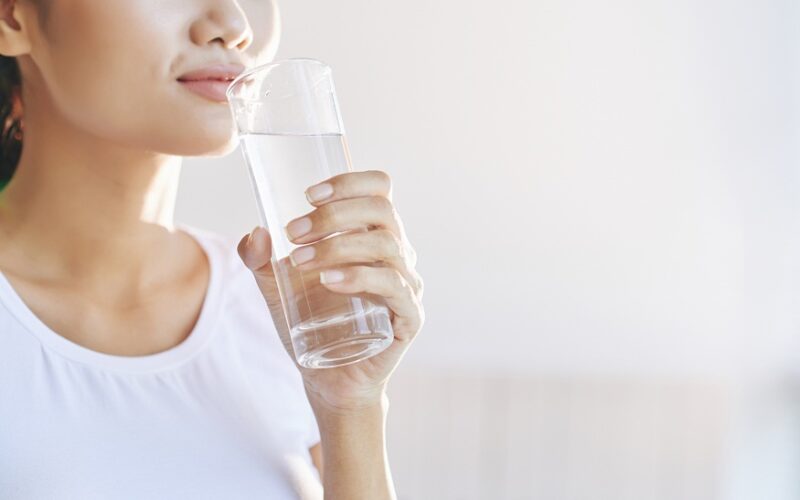It’s quite normal to feel thirsty after doing workouts, on a hot day, or after eating salty foods. But if you keep on reaching for water, notably if it’s interfering with your day-to-day activities, you should take action immediately, because the most common symptom of diabetes is frequent thirst, which is also known as polydipsia. Have you ever imagined what causes this intense urge to drink water? And why are these thirst issues common among individuals with diabetes, and what does it mean for your health? Further, in this blog, let’s explore the connection between diabetes and frequent thirst in detail.
What is polydipsia?
Polydipsia is a medical term that is used to describe abnormal or excessive thirst. Also, you need to understand that you won’t just feel thirsty post-workout or a spicy meal, it’s a persistent feeling to drink water, often paired with polyuria (urinating often).
This can occur due to dehydration, dry mouth, or a few medications, Polydipsia is often a key sign of diabetes, notably undiagnosed or poorly managed diabetes. In such cases, consider reaching the best diabetes hospital in Coimbatore to manage your diabetes and thirst.
What is diabetes?
Before knowing why you often become thirsty due to diabetes, it’s crucial to know about diabetes in brief.
- Diabetes mellitus is a persistent condition where your body fails to produce sufficient insulin (Type 1 diabetes) or becomes resistant to insulin (Type 1 and Type 2 diabetes).
- Insulin is a hormone that assists in regulating blood sugar (Type 2 diabetes).
- When insulin function gets disturbed, blood sugar levels will be increased, and will result in hyperglycemia (high blood glucose).
How does high blood sugar cause frequent thirst?
Further, let’s see in detail what will happen in the body:
- Excess sugar in the bloodstream:
If you have diabetes, your body will struggle to efficiently use glucose for energy. Further, in the blood, the glucose will get stored. This is known as hyperglycemia.
- The kidney steps in:
Usually, the kidneys will reabsorb glucose and put it back in the bloodstream. Simply, when blood sugar levels are very high, the kidney becomes overwhelmed and can’t keep up. Further, they will flush the excess glucose out of the body through urine, this process is known as glycosuria.
- Increased urination:
To flush out the excess glucose, your body draws water from your tissues into the urine. This will result in frequent urination, even sometimes multiple times an hour. Simply, when more water is leaving your body, your hydration levels will be dropped.
- The brain triggers thirst:
Due to the fluid loss, your body will be dehydrated. The brain will send you a signal to make you feel more thirsty, making you drink excess water to restore your balance.
- It becomes a cycle:
Simply, the more water you drink, you will urinate a lot, so when you urinate often, you will easily get thirstier. This vicious cycle continues as long as blood sugar levels remain high and unmanaged.
What are the other contributing factors to thirst and diabetes?
While high blood sugar is the actual culprit, several related factors can worsen the thirst sensation.
- Dry mouth:
One of the common issues faced by individuals with diabetes includes dry mouth, either from dehydration or as a side effect of medications. As a result, you are forced to consume more water.
- Certain medications:
Few medications are employed in treating diabetes and other health issues, even at times, it can result in dehydration or dry mouth, and increased thirst.
- Electrolyte imbalance:
Apart from fluid loss, frequent urination will result in loss of sodium, potassium, and other electrolytes. An imbalance in these minerals can cause excessive thirst, fatigue, and muscle cramps.
When should an individual be worried about this?
Also, you need to understand that thirst is not always that serious, but when it’s persistent and strikes you with other symptoms of high blood sugar thirst, it highlights the low maintenance of blood sugar.
The common warning signs that often accompany thirst in diabetes include:
- Fatigue
- Frequent urination
- Sudden weight loss
- Blurred vision
- Slower wound healing
- Experiencing numbness
In case you are experiencing these signs, notably appearing with one another, its crucial to consult a doctor and get your blood sugar levels tested.
How to manage thirst with diabetes?
A combination of approaches is required to manage thirst with diabetes, and some of them include:
- Constant blood sugar levels:
The finest method to manage excessive thirst is by keeping your blood sugar levels within a healthy range. This involves:
- Taking prescribed medications or insulin
- Check your blood sugar glucose regularly
- Consuming diets low in refined carbs and sugars
- Stay hydrated:
Drink sufficient water throughout the day. Further, avoid sugary drinks, sodas, and caffeine, as they will worsen your dehydration. We will say that plain water is the best.
- Notice your sodium intake:
Simply, extra salt in your diet will increase your thirst. Consider eliminating processed and salty foods if you are experiencing more thirst.
- Reach out to your doctor:
Also, when your thirst persists even though your diabetes is under control, it’s a crucial sign to discuss with the best diabetologist in Coimbatore to safeguard your health. They will look for:
- Kidney function issues
- Side effects of medication
- Hormonal fluctuations
Bottom line:
In conclusion, we can say that frequent thirst in diabetes is something apart from an annoying symptom, it’s a sign that your body is struggling to maintain balance. It’s a silent indication by your body that your sugar levels are spiking, and immediate treatment is required. By knowing the link between diabetes and thirst, you can maintain your health in a better way. In case you or your loved one is experiencing constant thirst along with some other signs, never ignore it and get medical advice and get tested.

